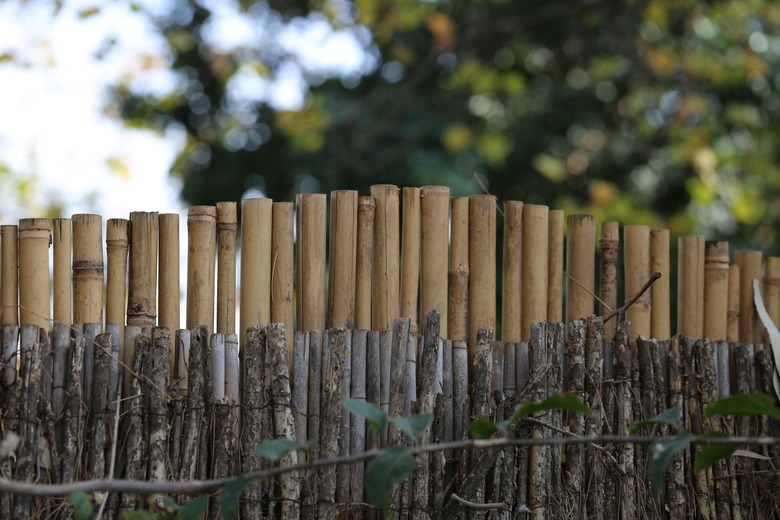How To Install Rolled Bamboo Fencing
We may receive a commission on purchases made from links.
Rolled bamboo fencing can be one of the simplest and most affordable ways to improve your garden's privacy. The rolls are made of small bamboo reeds or split bamboo canes tied together into rolls and are sold in various heights and widths.
Installing a bamboo fence can be relatively easy if you have an existing fence or posts in place — though the process may be more time consuming if you need to create a framework as well.
Benefits of Rolled Bamboo Fencing
Benefits of Rolled Bamboo Fencing
DIY bamboo fencing may be right for your garden if you're looking to create more privacy or to screen off a particular area. The reeds are water-resistant, sturdier than other rolled fencing, such as willow or bark, and solid enough to create an effective screen. Bamboo is also a relatively fast-growing plant, so this can be a more sustainable option.
This can be an ideal solution if you already have a fence in place that is too low, not particularly attractive — or both. The bamboo should be easy to cut to suit the space and to attach with cable ties or wire.
Before You Start
Before You Start
Check guidelines in your area and whether the city requires any specific permits. Permission may be required for fences over a certain height. It's also important to ensure the rolled bamboo fencing is secured firmly and safely to withstand strong winds or other extreme weather conditions.
Rolled bamboo fencing comes in different widths and heights, so measure the space first with a tape measure or mason's string.
Install Bamboo Fencing on a Wall
Install Bamboo Fencing on a Wall
A brick or stone wall can be used as a sturdy base for your rolled bamboo fencing, though you'll need to create a wooden framework on which to mount the screening.
- Create a mount for the fencing with 2x4 pieces of wood. Use a drill and masonry screws to attach the wood so it runs the length of the wall toward the top and bottom.
- Unroll the fencing and rest it against the wall where it will be attached. Pre-drill holes in the bamboo fencing around every foot or so, in line with the 2x4 mounts.
- Attach the bamboo fencing to the 2x4 mounts with mounting screws, using the predrilled holes.
Install Bamboo Fencing on a Wooden Fence
Install Bamboo Fencing on a Wooden Fence
You can use rolled bamboo fencing to add height to an existing fence, fill in any gaps and improve privacy.
- Unroll your bamboo fencing and stand it against your fence where it will be attached.
- Pre-drill holes 5 inches from the top and bottom of the bamboo, spacing them every 12 inches or so.
- Use mounting screws to fix the bamboo to the wooden fence through the predrilled holes.
Install Bamboo Fencing on a Chainlink Fence
Install Bamboo Fencing on a Chainlink Fence
A chainlink fence provides an ideal base for rolled bamboo fencing, whether the goal is to add height, improve appearance, increase privacy — or all three.
- Roll out your bamboo fencing and prop it against the fence as you want to attach it.
- Attach with cable ties. Loop through two or three poles of bamboo and around the chainlink fence and tighten to secure. Repeat every 12 inches or so along the length of the fence, securing toward both the top and bottom.
- Trim the excess from the cable ties to neaten the look.
Install a Freestanding Bamboo Fence
Install a Freestanding Bamboo Fence
Rolled bamboo fencing provides a relatively simple way to add a brand-new border or privacy screen, though you'll need to create a solid framework to attach it to.
- Construct a fencing frame using 5x5 cedar (or similar strong wood) posts at intervals of around 12 feet. Dig a 30-inch deep hole, set the post in and use a spirit level to ensure it's straight. Pour one 33-fluid-ounce bag of fence post-mix into the hole, checking again that the post is straight before filling in the hole with soil.
- Use a drill to attach 2x4 rails between the posts along the entire length, leaving around 5 inches from the top and bottom.
- Unroll your bamboo fencing and place it against the frame to see where it will be attached. Pre-drill holes in line with the 2x4 rails at intervals around 12 inches and use mounting screws to fix the fencing in place.
